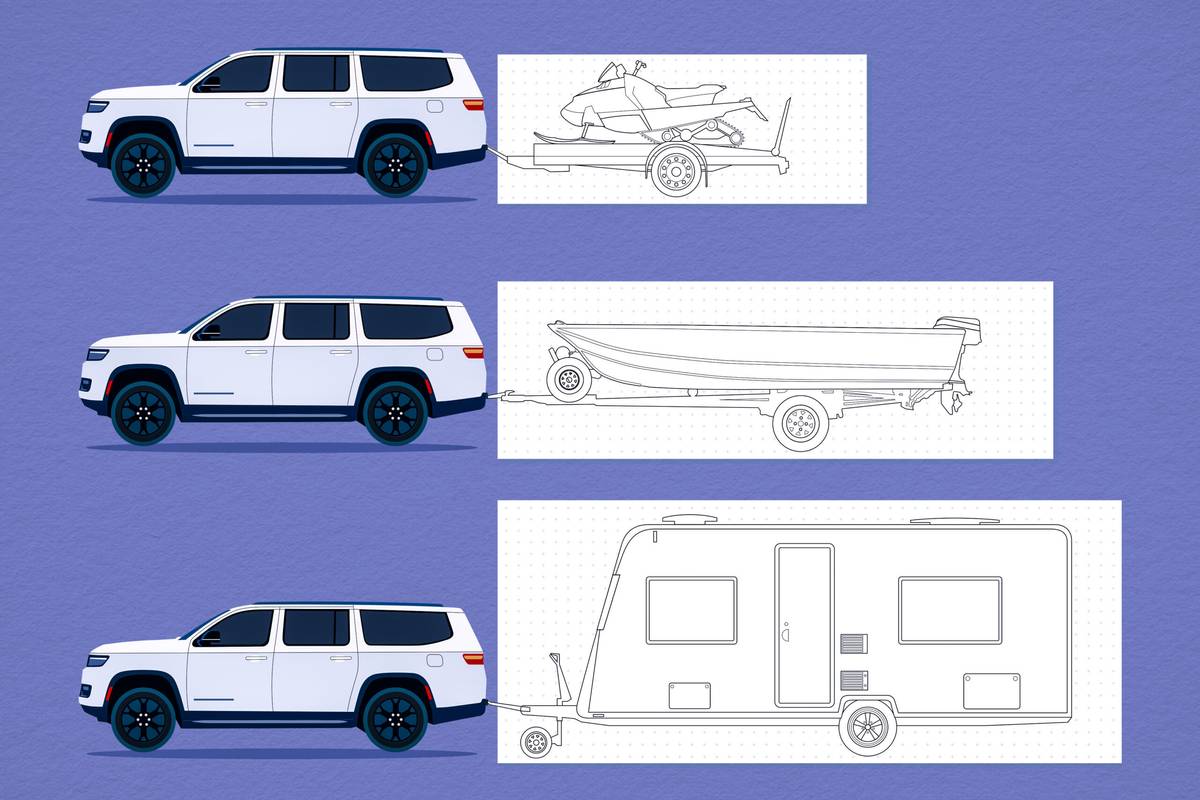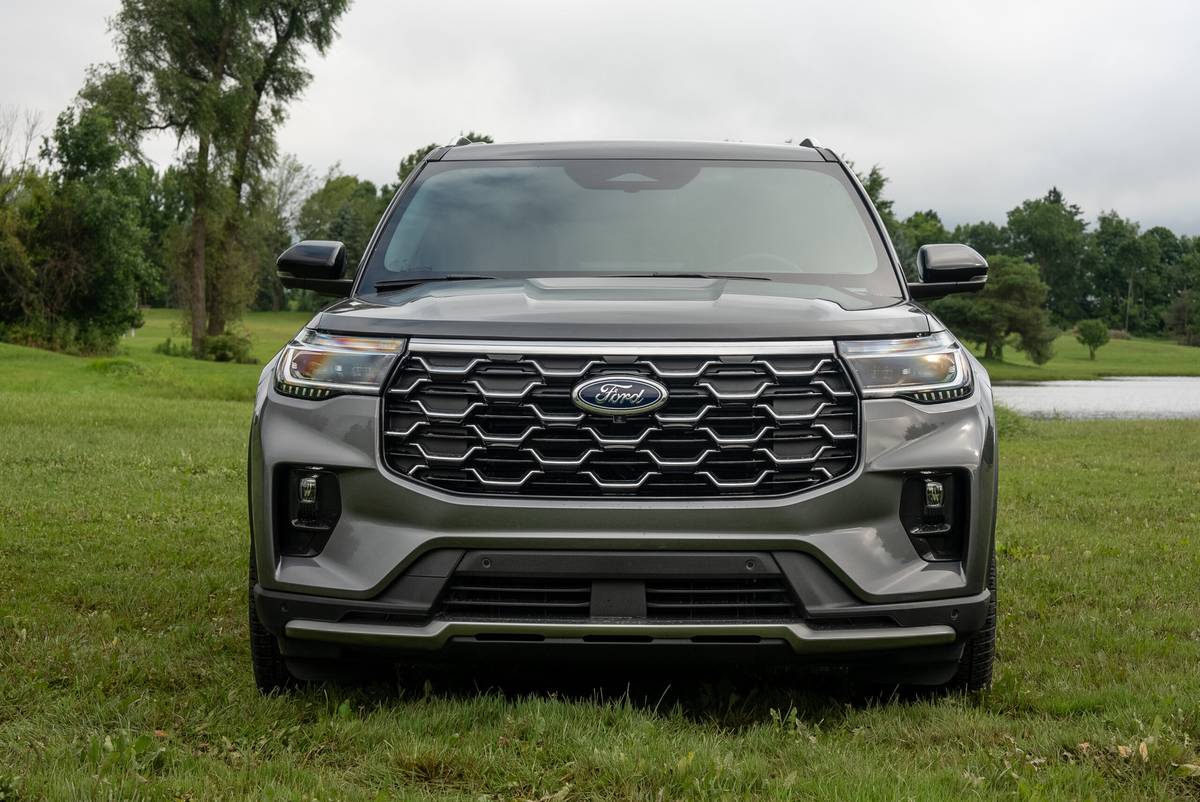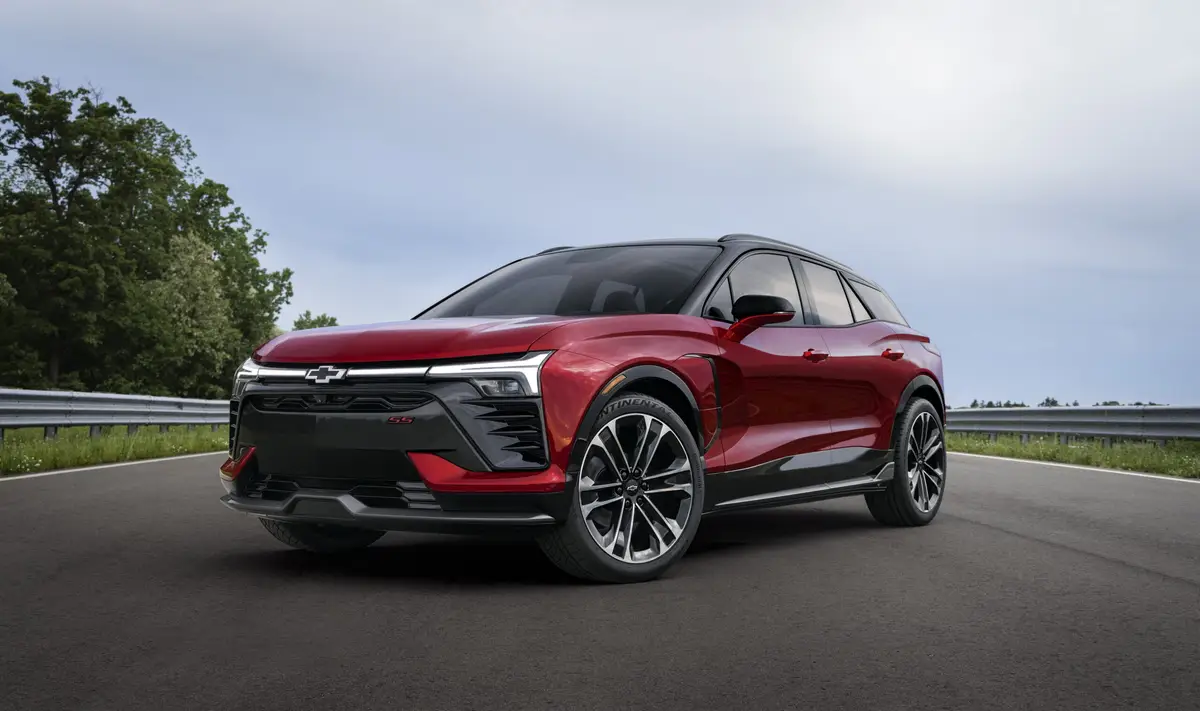2002 Ford Explorer: What's New
Vehicle Overview
Due in part to the Firestone tire debacle in 2000 and after several delays, Fords redesigned Explorer went on sale in February 2001 as a 2002 model. A corporate twin to the Mercury Mountaineer, the newest Explorer takes up where its popular predecessor left off, with some significant improvements and a fresh look as part of what Ford calls a ground-up redesign.
Responding to complaints about ride quality in Fords hot-selling sport utility vehicle, engineers devised a new and innovative independent rear suspension described as a porthole-in-frame design. Instead of having half-shafts on each side of the rear differential and over or under the vehicles frame, the shafts in the new Explorer poke right through holes that are built into the frame. In addition to smoothing the ride, this configuration allows a lower step-in height in the new version. In fact, the floor pan has been dropped by 7 inches. As a bonus, additional space is made available for the installation of an optional third-row seat, which allows seven-passenger capacity.
Track width has been increased by 2.5 inches, which should help to improve stability. Interior space is greater than in previous Explorers. Bumpers have been lowered by 2 inches to make the Explorer roughly compatible with a midsize sedan in the event of a minor collision. Side curtain-type airbags are standard and can be augmented by a new Safety Canopy that becomes available in fall 2001, which the automaker claims is an industry first. Explorers can be equipped with a Reverse Sensing System that detects obstacles while backing up, and an optional AdvanceTrac electronic stability system will be available later.
As in previous years, four-door Explorers come with either rear-wheel or four-wheel drive. Four trim levels are offered: XLS, XLT, Eddie Bauer and Limited. More than 445,000 Explorers were sold during 2000.
Exterior
Even though dimensions havent changed much, the new Explorer looks bigger than its predecessor. Some styling touches, including the brawny new front end, are supposed to hark back to the original Explorer, which debuted as a 1991 model. Door openings are bigger than before, which makes entry and exit easier when coupled with the reduced step-in height. The front wheels sit 2 inches farther forward than on prior Explorers with a shorter front overhang.
At 113.7 inches, the Explorers wheelbase has grown by 2 inches, and ground clearance is an inch taller. The Explorer measures 189.5 inches long overall 2 inches shorter than Chevrolets new midsize TrailBlazer and stands 71.9 inches high to the top of its roof rack. Tire styles vary among the four trim levels, but all tires are 16 inches in diameter.
Interior
Seating for five occupants is standard, but a third-row seat that allows for seven-passenger capacity can be installed as an option. Standard XLS equipment includes a SecuriLock passive anti-theft system, rear wiper/washer with defroster, remote keyless entry, roof rails, cruise control, illuminated entry, and power windows, locks and mirrors. In addition to an automatic transmission, the XLT gets a CD player, cargo shade, overhead console, aluminum wheels, lighted vanity mirrors and an outside temperature/compass display.
The Eddie Bauer and Limited models include dual-zone automatic temperature control, a tilt/telescoping steering wheel, an in-dash six-CD changer, heated leather bucket seats, fog lamps and heated mirrors. Adjustable pedals are standard in the Eddie Bauer and Limited editions and optional in the XLS and XLT. Options include the third-row seat, a power moonroof and running boards.
Under the Hood
Either a V-6 or V-8 engine can be installed. The 4.0-liter V-6 develops 210 horsepower, while the optional 4.6-liter all-aluminum V-8 produces 240 hp 25 hp more than the V-8 in the prior generation. A five-speed-manual transmission is standard, while a five-speed automatic is optional. ControlTrac four-wheel drive also is available.
Safety
Antilock brakes are standard, and side curtain-type airbags that protect the front- and second-row occupants are optional in all models. A new Safety Canopy system will be available later in the 2001 model year and adds rollover sensors to detect vehicle speed and roll rate. After its been fired, the Safety Canopy remains inflated for up to 6 seconds. The new AdvanceTrac system, which also will be available at a later date, combines traction control with electronic stability control. Reverse Sensing also is offered as an option.
Driving Impressions
Ford engineers attempted to improve the ride, and they succeeded. Unlike the 2001 Explorer, which was quite trucky in nature, its 2002 replacement comes across as more refined and carlike, yielding a pleasant, somewhat gentler ride. Although the suspension does not qualify as cushiony, it produces a ride experience thats suitable for a modern, if still truck-based, SUV.
Performance is clearly adequate with V-6 power, but the Explorer falls short of vigorous. Acceleration isnt quite overpowering with the V-8 either, but its decidedly stronger. Shifts from the automatic transmission are noticeable, but its not particularly bothersome. A moderate drone during acceleration reveals the vehicles truck origin.
The 2002 Explorer is easy to drive, and it maneuvers adeptly and handles capably enough. Though stable in tight curves, it might not be quite as confident at higher speeds as some drivers might prefer, but it meets SUV expectations throughout. Interior space is abundant in both the front and rear, though the moonroof cuts a bit into the drivers headroom. The reduced step-in height makes a noticeable difference in ease of entry.
Highly appealing overall, and likely to continue its popularity in the SUV category, the latest Explorer faces a lot of competition from GM and others. Offering a third-row seat and safety innovations should help, and the new independent rear suspension makes a noticeable difference. Because the new Explorer doesnt stand markedly above its competitors in other respects, volume sales may not be as easy to capture as in the past.
| Reported by Jim Flammang for cars.com From the cars.com 2002 Buying Guide |
Featured stories



